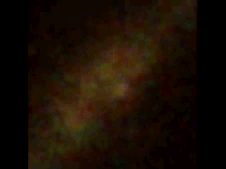 You must be quite familiar with what happens when you toss a pebble into a pond. You might describe the simple event as a massive rotating object splashing into a deformable fluid. Or, you might… not. However, astronomical bodies are like these pebbles sloshing around in a deformable fluid, called space-time, and this interaction, too, can produce those expected waves extending out from where the pebble drops.
You must be quite familiar with what happens when you toss a pebble into a pond. You might describe the simple event as a massive rotating object splashing into a deformable fluid. Or, you might… not. However, astronomical bodies are like these pebbles sloshing around in a deformable fluid, called space-time, and this interaction, too, can produce those expected waves extending out from where the pebble drops.
So claimed Albert Einstein in 1916 when he hypothesized that the universe is filled with special waves, called gravitational waves, that are the rippling effects from stars, pulsars, and black holes… all of which are the massive pebbles in our little pond of the Universe.
These waves of space-time, however, have never yet been directly observed. So, the phenomena, although it might seem reasonable, remains only a hypothesis. This is where the Laser Interferometer Gravitational Wave Observatory, or LIGO, comes into play.
Operated by CalTech and MIT, the LIGO device is a giant interferometer, which uses lasers bouncing off mirrors to try to detect changes in the interference patterns of superimposing waves. In this case, LIGO is looking for interference patterns in gravitational waves. For example, let’s imagine two neutron stars far far away that have been stably orbiting one another for a really long time. One day, they fall into one another and merge into a single massive body. That’s a really big pebble splashing into the space-time pond, and the result might be sinusoidal ripples pouring outward from the collision. Eventually, these ripples–which apparently don’t diminish much as they traverse through space-time–come rolling toward Earth, like a tsunami of space-time.
 The waves, then, will pass through the LIGO interferometer detectors, which are zapping laser beams back-and-forth and precisely measuring the intensity and time of travel of the beams, and temporarily alter the local structure (or flow) of space-time thereby altering both the physical and temporal paths taken by the high-precision lasers. The detectors record an unexpected time of travel between laser reflections, and so something must of happened to space-time! (Learn more about how LIGO actually works.)
The waves, then, will pass through the LIGO interferometer detectors, which are zapping laser beams back-and-forth and precisely measuring the intensity and time of travel of the beams, and temporarily alter the local structure (or flow) of space-time thereby altering both the physical and temporal paths taken by the high-precision lasers. The detectors record an unexpected time of travel between laser reflections, and so something must of happened to space-time! (Learn more about how LIGO actually works.)
Now, a whole lot of data comes out of this sort of detector. We’re talking 24/7/365 measurements of precision-timed instruments that are looking for a nearly random event that could occur at any instant in time; at time which would be nearly impossible to predict and prepare for. So, you might image that analyzing a constant stream of dense data such as that from LIGO would require a great deal of computation time and resources.
And, this is where the mighty citizen scientist comes into play. Since 2005, citizen scientists have had the opportunity through Einstein@Home to help process all of this data collected from the LIGO gravitational wave detector in addition to radio signals from the Arecibo Observatory in Puerto Rico. By simply installing a convenient interface program on the computer, the system quietly cranks through all of the radio data and interferometric information, and looks for signs of astronomical pebbles that might be the source of gravitational waves.


NSF interview with Prof. Bruce Allen, Prof. Jim Cordes and the citizen scientists, Chris and Helen Colvin and Daniel Gebhardt [ WATCH WEBCAST ]
"Einstein@Home 'citizen scientists' discover a new pulsar in Arecibo telescope data" :: PhysOrg.com :: August 12, 2010 [ READ ]
Einstein@Home Press Release Information :: [ READ ]


